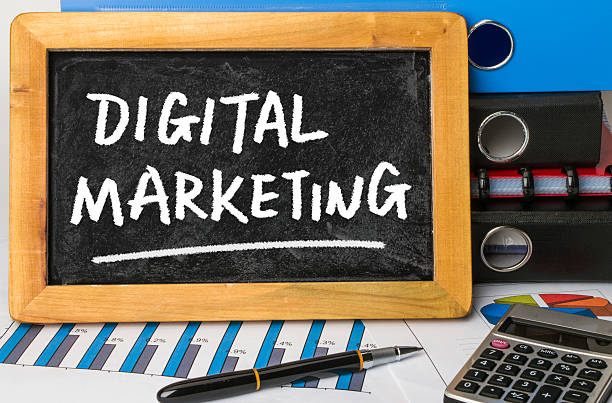In today’s hyper-connected world, digital marketing is at the forefront of how brands engage with their audience. While strategies and analytics dominate much of the conversation, an equally crucial component of successful campaigns is aesthetics. The term “digital marketing aesthetics” refers to the visual and experiential elements that create brand appeal, strengthen customer loyalty, and drive conversions. This article explores the concept of digital marketing aesthetics, why it matters, and how businesses can harness it to achieve greater impact in the online marketplace.
What are Digital Marketing Aesthetics?
Digital marketing aesthetics encompass the visual style, design principles, and artistic elements that brands use to present themselves online. This involves a combination of color palettes, typography, imagery, design layouts, and overall brand storytelling. Aesthetics serve as a visual language through which a brand communicates with its audience, helping evoke emotions, convey identity, and guide user experience.
Simply put, when a user visits a website, sees a social media post, or receives an email from a brand, the aesthetic appeal of the content determines their first impression and significantly influences their interaction with the brand. Digital marketing aesthetics combine art and psychology to optimize how messages are delivered to and received by the target audience.
Also Read: Digital Marketing Trends: How Analytics Are Shaping Campaign
Why Digital Marketing Aesthetics Matter
First Impressions are Powerful
First impressions matter in the cutthroat world of the internet. According to a Stanford University research, 75% of users rely their opinions on a company’s legitimacy on the way its website looks. Consumers make snap decisions based on aesthetic cues such as layout, colors, and visual hierarchy. An appealing design can increase credibility and encourage deeper exploration, while a poor design can lead to quick disengagement.
Brand Recognition and Identity
Consistent aesthetics help solidify a brand’s identity in the minds of consumers. Elements like logos, fonts, and color schemes, when used consistently across all channels, create a recognizable identity. For example, brands like Apple, Nike, and Coca-Cola have distinctive visual aesthetics that people instantly recognize. This recognition strengthens brand recall and builds trust among audiences.
Improved User Experience (UX)
Digital marketing aesthetics directly impact user experience. For instance, an e-commerce website with a cluttered layout, inconsistent colors, and poorly structured navigation will frustrate users, causing them to abandon their shopping journey. In contrast, a clean, user-friendly, and visually appealing website can guide users seamlessly through the sales funnel. Aesthetics that prioritize intuitive design and easy navigation translate into better user experiences.
Emotional Connection
Digital marketing aesthetics influence consumer emotions and behaviors. Different colors, fonts, and imagery evoke distinct feelings—bold, vibrant colors may communicate excitement and urgency, while soft pastels convey calmness and sophistication. By understanding the psychological effects of design elements, marketers can create emotional connections that resonate with their audience and inspire actions such as clicking on ads, signing up for newsletters, or making purchases.
Increased Engagement
In the social media era, engaging content often hinges on aesthetics. Eye-catching visuals and well-designed posts attract likes, shares, and comments, amplifying a brand’s reach. Conversely, unappealing visuals or disorganized content may be overlooked or ignored, reducing engagement potential. Platforms like Instagram and Pinterest are driven by visuals, making aesthetic appeal even more critical for success on such channels.
Key Elements of Digital Marketing Aesthetics
Color Psychology
Colors convey meanings and elicit emotions, making them a powerful tool in digital marketing aesthetics. Different colors evoke different emotions: red can indicate passion or urgency, blue conveys trust and professionalism, while green often suggests growth and nature. Brands must carefully select colors that align with their message and values. Maintaining a consistent color scheme across all digital touchpoints reinforces brand recognition.
Typography
The style and arrangement of text—referred to as typography—affects readability and conveys personality. Serif fonts often feel traditional and trustworthy, while sans-serif fonts are perceived as modern and clean. Choosing fonts that align with a brand’s voice and using consistent typography guidelines ensures clarity and strengthens brand cohesion.
Imagery and Visual Content
Images, videos, and graphics are powerful aesthetic tools for communicating a brand’s message. Authentic, high-quality visuals are more likely to grab attention and make a lasting impression. Additionally, visual storytelling—using images and videos to tell a story—creates emotional resonance and fosters engagement.
Layout and Composition
The way elements are arranged on a webpage, social media post, or ad affects how users interact with the content. Balanced composition, strategic use of white space, and attention-grabbing focal points contribute to better readability and comprehension. The placement of buttons, call-to-action elements, and visual hierarchy influence user navigation and behavior.
Responsive Design
With users accessing content on a wide range of devices, responsive design—ensuring content looks good and functions well on all screen sizes—is an essential component of digital marketing aesthetics. Responsive aesthetics enhance usability and reduce the risk of users abandoning content due to poor layout on mobile devices.
Consistency Across Channels
Consistency is key in digital marketing aesthetics. Using the same color palette, typography, imagery, and tone across websites, social media platforms, emails, and ads creates a unified brand experience. Consistency fosters brand trust, as users can instantly recognize and connect with familiar visual cues.
Best Practices for Mastering Digital Marketing Aesthetics
Know Your Audience
Understand your target demographic’s preferences, behaviors, and expectations. Use aesthetics that resonate with their interests and desires. For example, a youthful brand may adopt bold and dynamic visuals, while a luxury brand might favor elegance and minimalism.
Be Authentic
Authenticity is valued in digital marketing. Use genuine visuals, avoid stock imagery when possible, and maintain a design style that reflects your brand’s unique story and values.
Balance Aesthetics and Functionality
While aesthetics are important, they should never come at the expense of functionality. Ensure that your designs are user-friendly, with clear navigation, accessible content, and intuitive interfaces.
Leverage Data for Aesthetic Decisions
Use data to understand what works best for your audience. A/B testing different design elements—such as button colors, page layouts, and imagery—can reveal preferences and inform decisions that improve engagement.
Stay Current with Trends
Design trends evolve rapidly in the digital space. While it’s important to maintain a consistent brand identity, staying aware of modern trends (e.g., minimalist design, motion graphics, or bold typography) can help keep your brand fresh and relevant.
Conclusion
Digital marketing aesthetics play a pivotal role in shaping how brands are perceived, engaged with, and remembered. By understanding the principles of visual communication and aligning aesthetics with brand values and user expectations, businesses can create a lasting impression that drives engagement and loyalty. In an increasingly visual online landscape, aesthetics are not merely an afterthought—they are a powerful force that defines the success of digital marketing efforts. Prioritizing digital marketing aesthetics is an investment in building a strong, cohesive, and memorable brand presence in the digital era.





